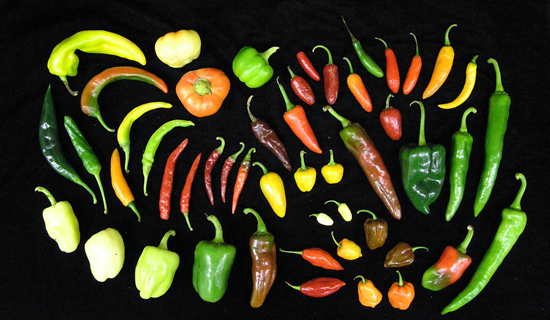The impacts of pepper domestication on the evolution of insect herbivores and plant microbes in different ecological zones.
Domestication of plants and the rise of agricultural production have had a profound impact on nature and society. Approximately 10,000 years ago, plants were selected to outperform their wild relatives in function related to agronomic and horticultural traits. As domestication and modern agriculture ensued, communities and landscapes changed, including the ecology, evolution and interactions with other organisms living in the same ecosystem.
Artificial selection dramatically decreased plant genetic diversity. This has led to germplasm that outperforms its wild relatives in numerous traits including yield. Plant selection has also resulted in changes in the composition of species interacting with the domesticated plants. Plant-associated organisms (PAOs), such as herbivores and fungi, adapted and evolved into lineages that are now specialized on domestic plants due to the rise and spread of agriculture and increasingly rapid environmental changes.
Narrowing of the genetic base and monoculture production has led to severe outbreaks of pests and diseases. The lack of genetic diversity hinders the ability to adapt to the rapid environmental changes brought on by the rise of human societies. Initially, plants were selected for traits specific to the domestication syndrome (e.g., enlargement of the harvested organs, reduced seed dormancy) often at the expense of resistance to pests and resilience to environmental fluctuations. Furthermore, targeted plant breeding over the last 80 years has led to commercial varieties that represent a severe erosion of phenotypic diversity. Many other important characteristics including diverse flavors, nutritional value, and specific culinary uses, were lost from earlier domesticates and landraces.
This project has three aims 1) how chile pepper domestication led to the change in biodiversity of pepper and its PAOs, 2) identify genes that contribute to plant resistance and phenotypic diversity as well as microbial and insect herbivore adaptation, and 3) implementation of this knowledge into the development of sustainable chile pepper production in Central America and around the globe.
Our first collecting trip, funded by CAPS (http://caps.osu.edu/) was held in Oaxaca and Merida in June 2012.
